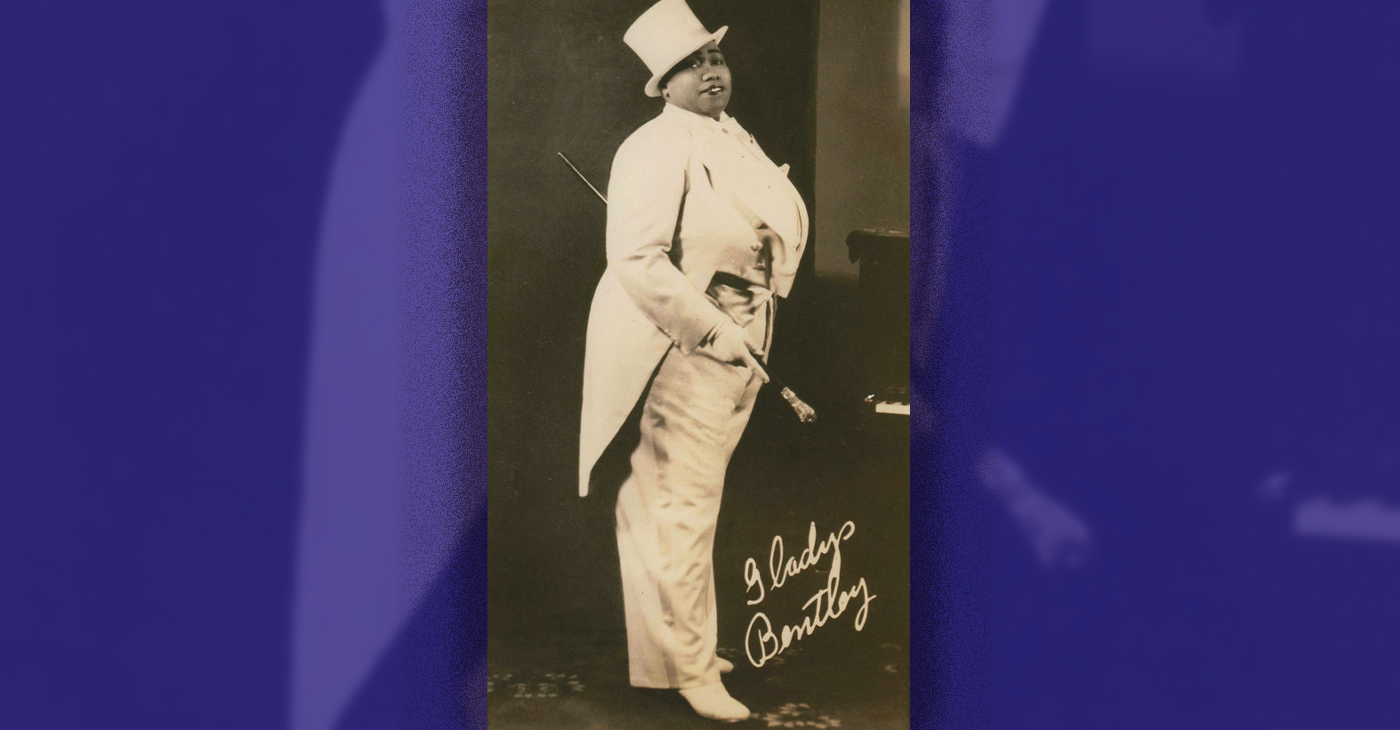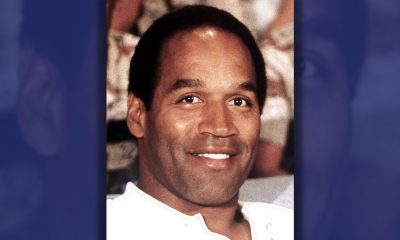Black History
Cross-Dressing Blues Artist Gladys Bentley Was ‘Out’ Ahead of Her Time
In 1934, New York City’s King’s Terrace nightclub faced closure after complaints about its “dirty songs.” The venue had been hosting a troupe led by Gladys Bentley, an audacious piano-playing blues artist who thrilled and scandalized audiences with her provocative music.

By Tamara Shiloh
In 1934, New York City’s King’s Terrace nightclub faced closure after complaints about its “dirty songs.” The venue had been hosting a troupe led by Gladys Bentley, an audacious piano-playing blues artist who thrilled and scandalized audiences with her provocative music.
Born in Phila., Pa., Bentley arrived in Harlem around 1925 at the age of 16 and became part of the vibrant artistic community during the influential Harlem Renaissance. Proudly embracing her identity as an African American woman who loved other women, donned men’s clothing, and sang risqué songs, Bentley challenged societal norms.
Although Bentley’s performances prevented her from gaining mainstream recognition and limited her inclusion in history books, her portraits now grace the African American History Museum’s music collections.
Starting her career in Harlem’s rent party circuit, Bentley wowed audiences with her deep, growling voice and scatting skills. She fearlessly added explicit lyrics to popular tunes, leaving a lasting impact on her listeners.
While her popularity soared in the rent party scene, Bentley also pursued opportunities in established Harlem nightclubs. At the Mad House on 133rd Street, she convinced the skeptical boss to give her a chance.
Bentley’s energetic piano-playing and unique style of fashion, featuring immaculate dress shirts, bow ties, oxfords, and short Eton jackets, set her apart as a “male impersonator.” Her flirtatious interactions with women in the audience captivated all who witnessed her performances.
As Bentley’s career flourished, she graced prominent Harlem venues such as the Cotton Club and the Clam House, a renowned gay speakeasy. Her act attracted diverse audiences, including both African Americans and white patrons. Writers like Carl van Vechten were drawn to Bentley’s talent, featuring her as a character in their works.
In the 1930s, she headlined at Harlem’s Ubangi house, where she was backed by a chorus line of drag queens.
With the repeal of Prohibition, the club scene in Harlem declined. She relocated to Southern California, where she was billed as “America’s Greatest Sepia Piano Player” and the “Brown Bomber of Sophisticated Songs” according to Wikipedia. She continued performing in upscale venues but in a more subdued manner than her earlier days in Harlem. Harassed for wearing men’s clothing, she began facing scrutiny during the repressive McCarthy era in the 1950s.
In a 1952 article for Ebony magazine titled “I Am a Woman Again,” Bentley shared her life story. She recounted her glamorous life as a performer and her personal struggles existing in a realm between traditional gender boundaries. Bentley claimed to have undergone medical treatment that awakened her “womanliness” and mentioned her marriages. However, the veracity of these claims remains uncertain.
Bentley continued her career for a few more years but succumbed to pneumonia in 1960. Today, her story is being rediscovered and celebrated as that of a gender outlaw and a pioneer of self-expression.
Bentley’s defiance of societal norms serves as a reminder of the power of self-expression, resilience, and the courage to challenge expectations. Her legacy inspires individuals to embrace their true selves fearlessly.
Bentley’s contributions to the Harlem Renaissance and her unyielding embrace of her identity remain impactful. Her audacity and refusal to conform continue to inspire generations. Gladys Bentley, an extraordinary performer, trailblazer, and symbol of empowerment, leaves a lasting impression on those who follow her path.
Activism
Oakland Post: Week of April 24 – 30, 2024
The printed Weekly Edition of the Oakland Post: Week of April 24 – 30, 2024

To enlarge your view of this issue, use the slider, magnifying glass icon or full page icon in the lower right corner of the browser window. ![]()
Activism
Oakland Post: Week of April 17 – 23, 2024
The printed Weekly Edition of the Oakland Post: Week of April 17 – 23, 2024

To enlarge your view of this issue, use the slider, magnifying glass icon or full page icon in the lower right corner of the browser window. ![]()
Black History
Matthew Henson: Explorer Extraordinaire
Matthew Henson, a trailblazing explorer who overcame countless obstacles to leave an incredible mark on history. Born on August 8, 1866, in Charles County, Maryland, his journey is a testament to the power of determination and the spirit of adventure.

By Tamara Shiloh
Matthew Henson, a trailblazing explorer who overcame countless obstacles to leave an incredible mark on history. Born on August 8, 1866, in Charles County, Maryland, his journey is a testament to the power of determination and the spirit of adventure.
Henson’s life began amidst the backdrop of post-Civil War America, where opportunities for African Americans were scarce. From a young age, he possessed an insatiable curiosity about the world beyond his small town. At the age of 12, he embarked on a journey that would change the course of his life forever when he joined a merchant ship as a cabin boy.
His most famous expedition was his journey to the Arctic with renowned explorer Robert E. Peary. In 1887, Henson joined Peary’s crew as a seaman and quickly proved himself to be invaluable with his skills as a navigator and craftsman. Over the course of several expeditions, Matthew endured extreme cold, treacherous terrain, and grueling conditions as he and Peary sought to reach the elusive North Pole.
In 1908–09, Peary set out on his eighth attempt to reach the North Pole. It was a big expedition, with Peary planning to leave supplies along the way. When he and Henson boarded their ship, the Roosevelt, leaving Greenland on August 18, 1909, they were joined by a large group. This included 22 Inuit men, 17 Inuit women, 10 children, 246 dogs, 70 tons of whale meat, blubber from 50 walruses, hunting gear, and tons of coal.
In February, Henson and Peary left their anchored ship at Ellesmere Island’s Cape Sheridan, along with the Inuit men and 130 dogs. They worked together to set up a trail and supplies along the way to the Pole.
Peary picked Henson and four Inuit people to join him in the final push to the Pole. However, before they reached their destination, Peary couldn’t walk anymore and had to ride in a dog sled. He sent Henson ahead to scout the way. In a later interview with a newspaper, Henson recalled being in the lead and realizing they had gone too far. The group turned back, and Henson noticed his footprints helped guide them to their destination. At that location, Henson planted the American flag.
Henson’s legacy extends far beyond his expeditions to the Arctic. He shattered racial barriers in the world of exploration and inspired countless individuals, regardless of race, to dream big and pursue their passions. In 1937, he was finally recognized for his achievements when he was inducted into The Explorers Club, an organization dedicated to promoting scientific exploration and field research.
Matthew Henson died in the Bronx, New York, on March 9, 1955, at the age of 88.
-

 Activism4 weeks ago
Activism4 weeks agoOakland Post: Week of March 27 – April 2, 2024
-

 #NNPA BlackPress4 weeks ago
#NNPA BlackPress4 weeks agoBeloved Actor and Activist Louis Cameron Gossett Jr. Dies at 87
-

 Community2 weeks ago
Community2 weeks agoFinancial Assistance Bill for Descendants of Enslaved Persons to Help Them Purchase, Own, or Maintain a Home
-

 Activism3 weeks ago
Activism3 weeks agoOakland Post: Week of April 3 – 6, 2024
-

 Business2 weeks ago
Business2 weeks agoV.P. Kamala Harris: Americans With Criminal Records Will Soon Be Eligible for SBA Loans
-

 Activism2 weeks ago
Activism2 weeks agoOakland Post: Week of April 10 – 16, 2024
-

 Community2 weeks ago
Community2 weeks agoAG Bonta Says Oakland School Leaders Should Comply with State Laws to Avoid ‘Disparate Harm’ When Closing or Merging Schools
-

 Community1 week ago
Community1 week agoOakland WNBA Player to be Inducted Into Hall of Fame





















































